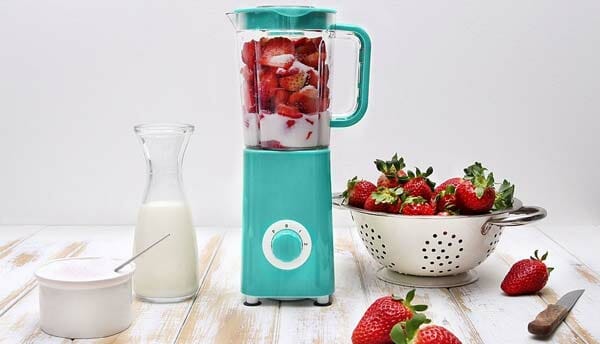SeaRanchLodge.com is a participant in the Amazon Associate program and will earn from qualifying purchases.
Blenders are quite a helpful addition to a person’s kitchen. They can be used to make grind fruit for shakes and blend food. There are very few times where a blender won’t help make things easier.
In recent times, blenders have been improved upon, and now there are so many blenders that it can be quite difficult to keep track of. All of them have their uses, with some excelling in certain tasks more than others.
Knowing more about them can improve your cooking and can help serve up delightful items. This article will help you know more about the different types of blenders.
Blender Jars Types Explainded
Before we dive into the different blender types, it is worth mentioning a bit about jars. Some blender types make use of jars. The jars used sometimes differ in what material they are made of.
While this does not dramatically alter the uses of a particular blender, they do offer some advantages and disadvantages which are worth noting. The different types of jars used in blenders are:
Plastic
Plastic jars are probably the most common. This is mostly because of their general sturdiness as well as being relatively cheap compared to their durability. They are also lightweight, and thus, it is easier to move the blender around if you need to.
However, low quality plastic is an issue and can be harmful to you. They also tend to have a lingering smell from the contents it blends. This might make plastic jars a bad option if you use it for curries as they need to be cleaned heavily to remove the smell and some stains.
Glass
While not as common, glass jars are still a good option and seen on many blenders. They sacrifice durability for having no lingering smell. This makes them good for blending some food that plastic can’t, and you won’t have to spend as much time cleaning it. They also don’t get stained as much.
As said before, glass is fragile, and it can be broken easily, and depending on what you’re using the blender for (such as crushing ice), glass jars are a very bad choice and can end up getting damaged. They also cost more.
Metal
Despite seeming unwieldy, metal jars are used with blenders, although their applications are a bit limited comparatively. They are indeed sturdy and won’t be a dent or broken easily. And they also last for a long time but are easily the most expensive type of jars to use.
Metal jars do not stain nor have lingering smells from food. However, while they are sturdy, they tend to make a bit more noise than the other types of jars.
Different Types of Blenders
There are numerous blenders featuring a wide range of different designs and functionality.
Hand Blenders or Mixers
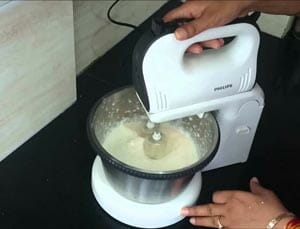
They’re called both hand blenders and mixers. These are quite common and are smaller in size with a handle. Despite their small size, they are quite powerful and can be used a lot.
Features
The features of this type of blender are as follows:
➥ Multiple Attachments and Options
The blender blades of a hand blender can be switched out for different purposes. These purposes range from beating eggs to stirring the batter.
While their effectiveness against particular ingredients or items may be less effective compared to the likes of more specialized blenders, they are quite versatile if you have the proper tools.
➥ Lightweight and Portable
Hand mixers, as the name suggests, are much more portable and easy to carry around than other blender types. They aren’t very heavy and don’t make use of jars, so they are easy to handle. This makes them easy to pick up even if you’re not an expert in the kitchen.
Uses
These blenders are primarily used for beating eggs with the proper attachment. They are quite fast and efficient when used to whipping cream. Since they aren’t too large, they don’t obstruct your visibility, and thus, it is easier to follow the cream or egg and see when it’s done.
However, despite their power, they struggle with batter, especially if it is thick. As a result, you can’t use them with dough.
Countertop or Full-Size Blender
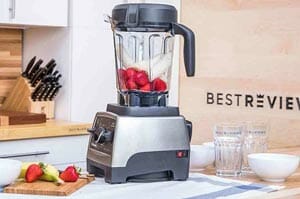
This is another very common blender seen in almost all homes. The countertop makes use of a jar and is named so as it is usually placed on top of a table or counter and connected to a power supply.
Features
The main factors of this blender are stated below:
➥ Large Capacity
Countertop blenders are big and can contain about 2 liters. This makes them suitable for blending and producing a larger amount of a particular food. It has high capacity, which makes them the best for making juices.
They also feature tight lids that seal the blender properly, preventing air from entering. And they do not budge easily, and hence, there is very little danger.
➥ Power
These blenders have a great deal of power, especially compared to the likes of hand blenders. They can easily crush and grind ice as well as blend fruits into juice easily and quickly.
Uses
Juices are primarily made using a countertop blender and even smoothies with crushed ice. However, there is a risk involved in using countertop blenders with hot liquids. Due to the tight lid, built up steam cannot escape and so you will need to stop the blending procedure from time to time to open the lid and let it escape.
Immersion Blenders
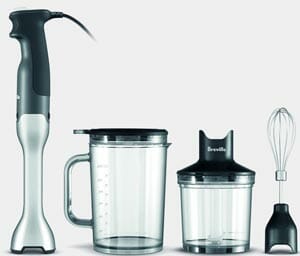
While the previous two were commonly seen blenders with wide applications, immersion blenders have a bit of a unique design with the blender blades connected to a stick-like handle.
Features
The important features of immersion blenders are given below:
➥ No Pressure Build-Up
Due to how immersion blenders work, they have less pressure building up and generally work much better with hot liquids compared to countertop blenders. This makes them much safer to use when making soup.
➥ Easier to Clean
Immersion blenders are very easy to clean as they don’t have any jars and can be used directly in a bowl or pot. As such, you only need to clean and rinse their blades, and you’ll be done.
Uses
Soup and hot liquids are generally a really good item to make using immersion blenders as they are made to work with hot liquids. They can also be used to make seed-free smoothies or drinks, but they do lack the power of full-size blenders, so the texture might not be the best.
Commercial Blenders
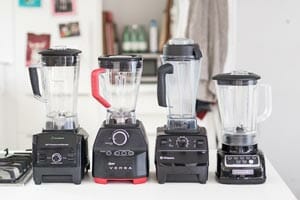
Commercial blenders expand upon countertop blenders. They generally have the same design and build but feature a stronger construction. And they have a powerful motor, which is their main claim to fame.
Features
The main aspects of commercial blenders are as follows:
➥ Powerful Motor
These blenders are known for power, and their sharp blades and powerful motor can grind and blend almost anything. They are easily the strongest type of blender out of all the different types.
➥ Durable
Alongside that powerful motor, is a strongly built blender. These are made to be as durable and strong as possible. Although this makes them difficult to move around, these type blenders aren’t meant to be carried.
➥ Large Capacity
They are made to hold larger volumes than even countertop blenders. Hence they can produce a large amount of the required blend or food, which is why they are highly valued in restaurants and food corners.
Uses
Due to the blending power of the commercial blender, it has a large variety of uses and can do all the things the previous blenders could. One of the unique applications of commercial blenders is for making sauce as the sauce is generally thicker and thus difficult to make for some blenders.
They are essential if you run a food service selling smoothies and serving dips for your customers.
Bottle Blenders
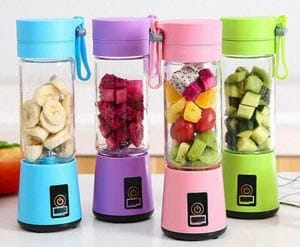
Bottle blenders are quite a unique departure from the previous types. They are portable blenders that make use of blender balls instead of blades. The blender ball is a sphere made out of metal wires that help mix the contents when shaken thoroughly.
Features
Below are the most important factors of bottle blenders:
➥ Portable
This is the biggest charm and defining feature of bottle blenders. They are easy to carry around as they easily fit in a bag or your hands. The lids used are often very tight, so spilling is rare.
➥ Ease of Use
Unlike other blenders, there’s not much difficulty involved in using a blender bottle. All you need to do is shake thoroughly so the contents mix, and as long as the lid is sealed tightly, you won’t have to worry. This, along with how portable they are, often makes them a popular choice for people who go out a lot.
Uses
Their primary use is to prepare protein shakes for gym-goers. And their portability does give them a wide variety of uses.
You can easily take a blender bottle with the necessary ingredients and make the drink you want on your way to someplace else. Blender balls aren’t as effective as blender blades, and hence blender bottles are mostly relegated to prepare shakes and drinks.
Stand Mixer
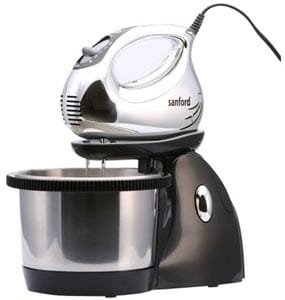
The stand mixer is a mix between the countertop blender and hand blender. It uses a similar mixer attachment but sacrifices the ease of being carried for more power and durability while retaining some of the advantages like variable speed controls and attachments.
Features
Here we have the main features of stand mixers.
➥ More Power
A stand mixer is comparable in power to that of a countertop blender. They can easily mix and blend heavy dough due to their more powerful motor.
➥ Versatile
Alongside that power, the stand mixer can also be fitted with various attachments and options to better suit your need. They can be used for whisking and cutting once fitted with the proper tools.
Uses
Stand mixers see the most use in bakeries. The cake batter is hard to make with a hand mixer, but a stand mixer can easily help with that.
Since many desserts make use of cake batter and heavy dough, the power and control of the stand mixer make it attractive for bakers. Although one should take care as cake batter and dough are hard to clean off from a stand mixer.
Conclusion
Here we have the six different types of blenders you’re likely to come across. They all have their benefits, with some being difficult to use compared to others. Learning more about these blenders will undoubtedly improve your cooking experience.
Some Other Kitchen Resources:


